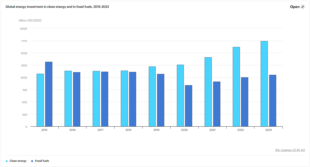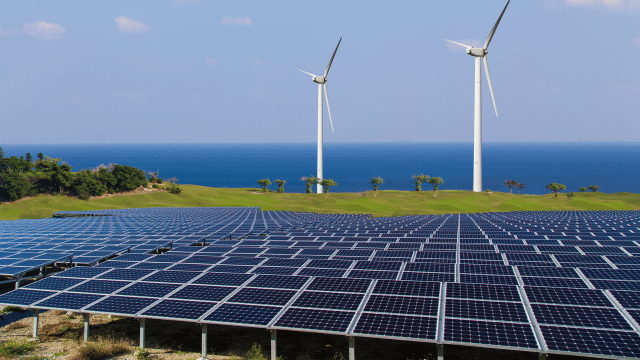The Renewable Revolution
According to a recent report from the International Energy Agency (IEA), spending on clean energy technologies is surpassing investments in fossil fuels as concerns about affordability and security, prompted by the global energy crisis, amplify the momentum behind sustainable alternatives.
The Rise Of Renewable Energy
Governments, businesses, and individuals worldwide have been increasingly embracing renewable energy sources, such as solar, wind, hydro, and geothermal power, as a means to address climate change and reduce dependence on fossil fuels. This shift has been propelled by factors such as declining costs of renewable technologies, improved efficiency of renewable energy systems, and growing awareness of the environmental and health impacts associated with traditional energy sources. As a result, the global capacity for renewable energy generation has expanded substantially, paving the way for a cleaner and more sustainable energy future. Between 2021 and 2023, annual investment in clean energy is projected to surge by 24%, fueled by renewables and electric vehicles. In contrast, fossil fuel investment is expected to increase by 15% during the same period.
How Much Is Invested In Energy?
The IEA’s latest World Energy Investment report reveals that approximately £2.23 trillion will be invested worldwide in the energy sector in 2023. Out of this amount, over £1.35 trillion is anticipated to be allocated to clean technologies, which encompass renewables, electric vehicles, nuclear power, grids, storage, low-emissions fuels, efficiency enhancements, and heat pumps. The remaining sum, around £800 million, will be directed toward coal, gas, and oil.

Wind And Solar Are Leading The Way
In 2022, wind and solar power achieved a significant milestone in the European Union (EU) by generating a historic 22.3% share of electricity production. This marked the first time that renewables, specifically wind and solar, surpassed the contributions of nuclear energy (21.9%) and natural gas (19.9%). The increased utilisation of wind and solar power sources reflects a growing shift towards clean and sustainable energy options in the EU’s electricity mix.
Solar Energy
Solar energy refers to the radiant light and heat energy emitted by the sun. It is a renewable and abundant source of power that can be harnessed and converted into usable electricity. Solar energy is captured using various technologies, with the most common being photovoltaic (PV) systems and solar thermal systems.
Photovoltaic systems, commonly known as solar panels, utilise the photovoltaic effect to convert sunlight directly into electricity. Solar panels are made up of multiple solar cells, typically made of silicon, which generate an electric current when exposed to sunlight. This current is then directed to an inverter that converts it from direct current (DC) to alternating current (AC), making it compatible with electrical appliances and the power grid.
Solar thermal systems, on the other hand, use the sun’s energy to heat water or other fluids. These systems typically consist of solar collectors that absorb the sun’s heat and transfer it to a fluid. The heated fluid is then used for various purposes, such as heating water for domestic use or generating steam to drive turbines for electricity generation.
Wind Energy
Wind energy is a form of renewable energy that harnesses the power of wind to generate electricity. It involves converting the kinetic energy of moving air into usable electrical energy. Wind turbines, commonly seen as large, tower-like structures with rotating blades, are used to capture the wind’s energy.
When the wind blows, it causes the turbine’s blades to spin. This rotational motion drives a generator housed within the turbine, which produces electricity. The key components of a wind turbine include the rotor (blades and hub), the nacelle (housing the generator, gearbox, and control systems), and the tower (providing height for capturing stronger winds).
How Much Of Our Energy Is Renewable?
In 2022, for only the second time in history, renewable resources created 38.2% of the total global energy generation. 2020 marked the first year in the UK’s history that electricity came predominantly from renewable energy, with 43% of our power coming from a mix of wind, solar, bioenergy and hydroelectric sources.
Solar panels and other renewable technologies are experiencing a surge in popularity as people increasingly discover their remarkable benefits. The growing awareness of the environmental impacts of traditional energy sources, along with renewable energy systems becoming more accessible and affordable, homeowners and businesses are able to generate their own clean electricity and reduce their reliance on the grid. Moreover, the reliability and efficiency of renewable technologies have improved significantly, making them a viable and attractive option for meeting energy needs.
Interested In Renewables?
If you’re interested in solar panels, wind turbines, or another renewable technology, you can Contact Us on our website or via:
info@radiantgroupuk.com | 01400 250572
